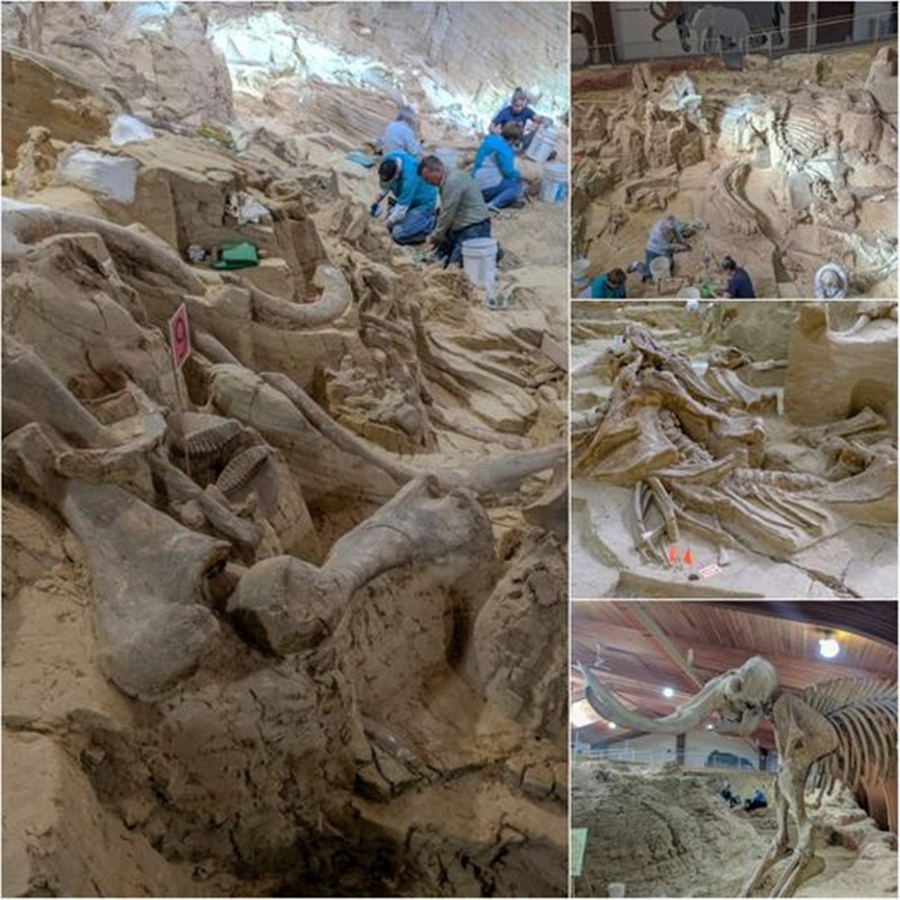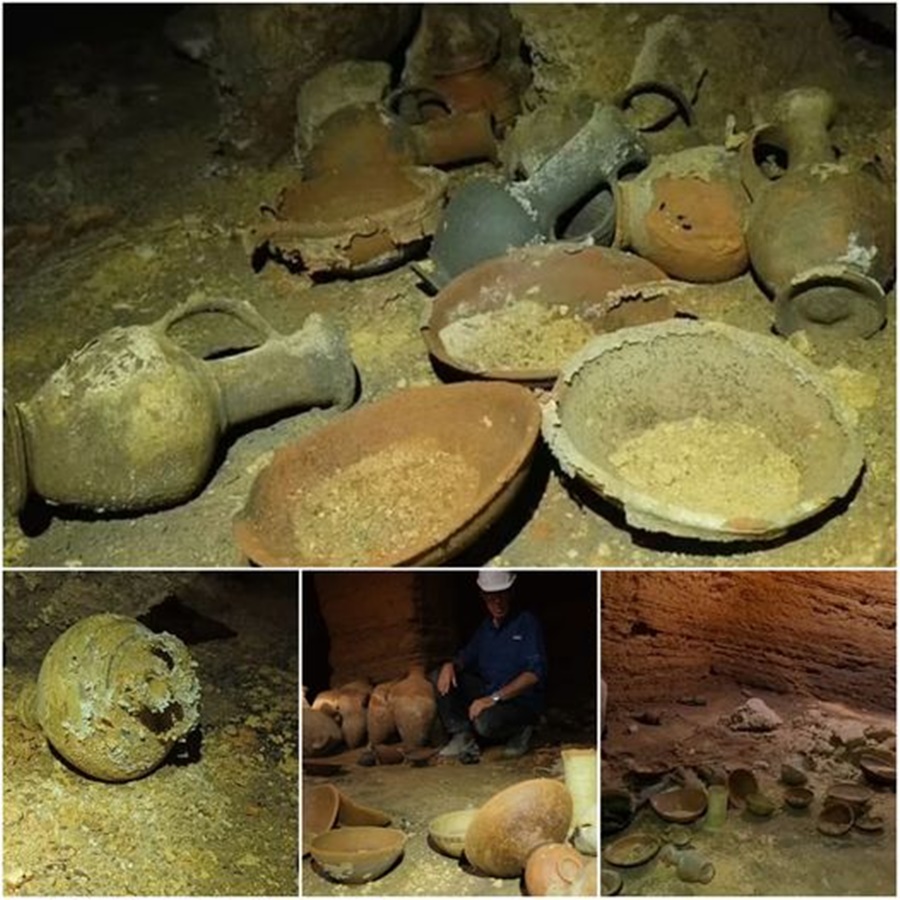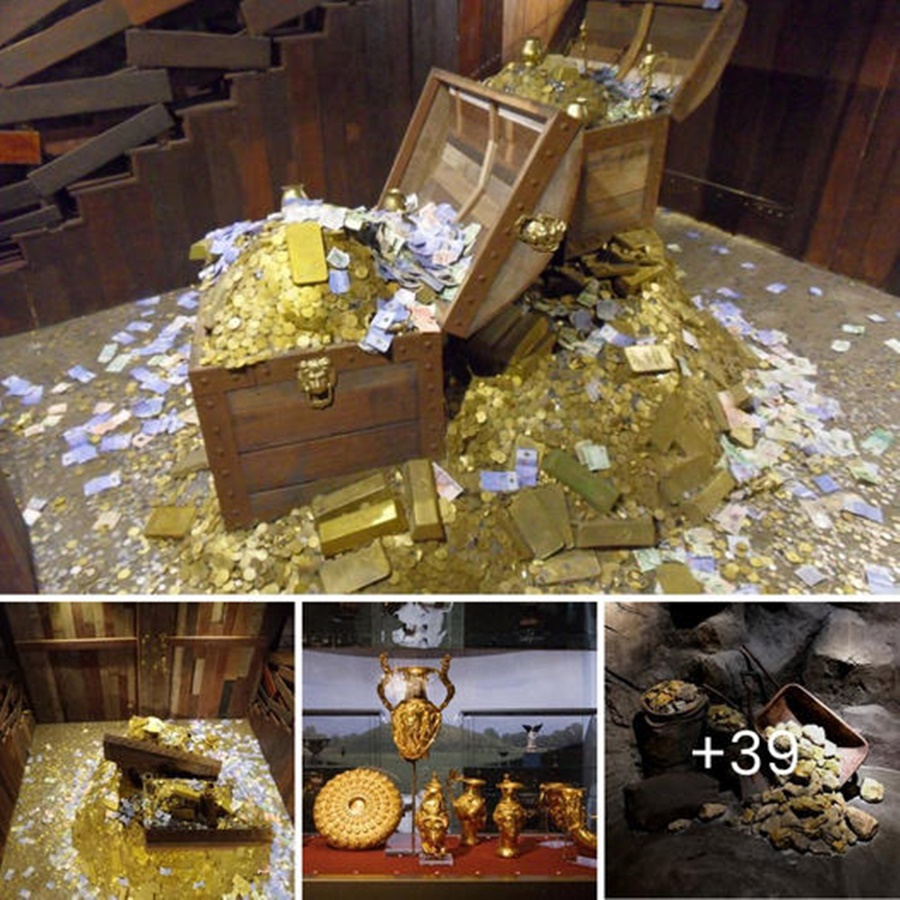
Inside the excavation of a South Dakota sinkhole that swallowed more than 60 mammoths
In a memorable scene from the original Jurassic Park movie, the audience is introduced to paleontologists Alan Grant and Ellie Sattler as they conduct an excavation of a dinosaur skeleton in Montana.
The camera closely follows the excavators’ hands as they delicately remove loose sand from around the complete and pristine bones, arranged just as they would have been in the dinosaur’s living skeleton. The result is almost museum-ready, requiring no additional glue or cleaning; it only needs to be set upright and prepared for public display.

As a paleontologist, this scene always brings a smile to my face, and a visit to the Mammoth Site of Hot Springs, South Dakota, will demonstrate why.
Today, the largest living creatures in the Black Hills region are bison, known for their wild and woolly nature. However, in the past, these hills were inhabited by even wilder and woollier creatures—mammoths. These ancient giants were drawn to the warm waters of the natural hot springs in the area. Sadly, one of these spring-fed ponds became a deadly trap for over 60 male mammoths. Once they entered the water, the slippery sides of the sinkhole prevented these massive creatures from climbing back out. Over time, their skeletons accumulated, eventually filling in the sinkhole.

These mammoths would remain hidden underground for 140,000 years until 1974 when a worker, while leveling the ground for a housing development project, discovered a mammoth tusk with the blade of his machine. Since then, the Mammoth Site has been an active excavation site, and it’s one of the few places in the United States where you can trace a fossil’s journey from the ground to the preparation lab and finally to the museum floor, all within the same facility.
Excavating the Ice Age
Upon arriving at the site’s parking lot, I am greeted by a life-sized reconstruction of one of the site’s namesakes, a Columbian mammoth, raising its trunk above the museum’s welcome sign. The town of Hot Springs fully embraces its extinct wildlife legacy. A nearby restaurant is aptly named “Woolly’s” in honor of the smaller mammoth species found in the vicinity. Surprisingly, there are numerous visitors on the morning tours of the site on a late September day.

Upon entering the room housing the excavation, I am struck by the sheer scale of the dig. It takes a significant hole in the ground to entrap more than 60 mammoths, primarily the larger Columbian species, although they have also uncovered a few woolly mammoths. The bones have been excavated in a manner that has created dramatic sheer walls and flat terraces in the yellowish-tan earth, on which mammoth skulls with enormous tusks are perched like statues on pedestals. The bones are piled haphazardly, in stark contrast to the perfectly articulated skeleton depicted in Jurassic Park.
As I descend the stairs from the main wooden walkway encircling the active excavation site and stand on a fenced platform at one of the deeper levels, I’m acutely aware that there may be numerous more Ice Age animal bones beneath my feet. In addition to the famous mammoths, various other species have been discovered here, including llamas, camels, and the giant short-faced bear (Arctodus simus).
The site’s geologists have estimated that the original sinkhole was about 65 feet deep. The dedicated team of paleontologists, interns, and volunteers working at the site has only excavated approximately 20 feet of that depth. Unlike the paleontologists in Jurassic Park, they rely on more than just paintbrushes and bare hands.
A Prehistoric Puzzle
On the day of my visit, a group of adult volunteers is busy working in the less-excavated section of the bonebed. They are carefully using hammers, small chisels, trowels, and buckets to tap, scrape, and remove loose sediment. One of the less glamorous aspects of a thorough excavation is the screen-washing process, where dirt is meticulously rinsed through a screen to retain only small fragments of rock, bone, and teeth, with the remaining material examined for tiny fossils of small mammals like rodents and rabbits that also met their fate in the sinkhole.

Some of this sorting takes place downstairs in the Mammoth Site’s fossil preparation lab. Upon taking a short elevator ride to the museum’s lower level, I witness a part of paleontology that most people overlook when they see a beautifully assembled skeleton in a museum. Upon exiting the elevator, I’m greeted by a wall of windows, allowing visitors to observe as bits of bone are carefully cleaned and reassembled, much like solving a puzzle where many pieces are broken or missing.
A wall-mounted TV displays a video of the site’s molding and casting process. Silicone rubber is used to create an exact mold of a fossil, which can then be used to make replicas (known as casts) of the bone, often displayed in museums. Since fossils are delicate and irreplaceable, working with casts is a safer option.
The individuals working in these spaces are the unsung heroes of paleontology, painstakingly resurrecting ancient bones. While many museums are starting to demystify the fossil preparation process by creating “fishbowl” lab spaces, the Mammoth Site is a unique destination where both excavation and bone reassembly occur under one roof.
Returning upstairs, I see the results of the site’s preparators in the museum’s traditional gallery space. Mounted mammoths and replicas of huts made from casts of mammoth bones and faux fur are on display. Half of this space is dedicated to the ancient life in the Black Hills and surrounding regions, while the other half focuses on fossil elephants and their relatives. Cases contain fragments of mummified tissue from mammoths found in the Siberian permafrost. The mounted skeletons include a Channel Islands pygmy mammoth, a smaller descendant of mainland Columbian mammoths.
The Mammoth Site is a local treasure of global scientific significance, and I can’t help but feel a bit envious of the Hot Springs residents who have access to these fossil riches at their doorstep. This experience also serves as a reminder that traces of prehistoric life can be found everywhere, even if they are typically less dramatic than a sinkhole teeming with mammoths.














